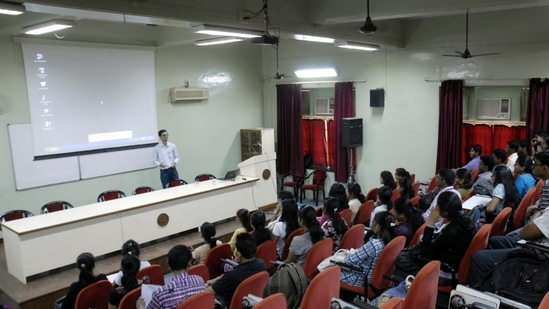India’s smart board revolution
This article is authored by Praveen Prakash, former principal secretary, school education, Andhra Pradesh.
With the new financial year approaching, policymakers across India’s education sector are deliberating on where to focus next year’s budget. While investments in infrastructure, teacher training, and digital education remain high priorities, here’s one suggestion that can unlock massive learning gains at minimal additional cost: making smart boards truly smart.

Over the past three years, India has installed 600,000 smart boards in government schools, funded through Samagra Shiksha, PM SHRI, and state development funds. Each smart board costs approximately ₹1 lakh, leading to a total public investment of ₹6,000 crore. A similar number of smart boards have been introduced in private schools as well.
Multiple studies and field visits indicate that in most classrooms, teachers use smart boards merely as digital blackboards, failing to leverage their interactive potential. A 2023 Brookings Institution study found that technology alone does not improve learning outcomes unless paired with engagement tools and structured pedagogy.
A study in the International Journal of Educational Technology concluded that smart boards alone do not significantly improve student performance unless accompanied by interactive learning mechanisms.
For smart boards to truly enhance classroom learning, they must be backed by two critical components:
· Student response systems (clickers): Wireless devices enabling real-time student responses. A 2019 Life Sciences Education study found that classrooms using clickers saw a 35% improvement in conceptual understanding.
· Standardised smart power point presentations (PPTs) for every classroom: 220 interactive lesson PPTs (one per teaching day) to ensure concept clarity. Each session includes three to four formative assessment questions, with students responding via clickers. The system tracks student progress in real time, allowing for data-driven interventions at the classroom and policy levels.
Equipping classrooms with clickers and standardised smart PPTs costs just ₹15,000 per classroom—a mere 15% increase over the current investment per smart board.
Countries that have successfully implemented smart board-driven education have focused on engagement, not just hardware:
· United States & United Kingdom: Clicker-based classrooms have led to 40% higher student participation.
· Singapore: The government mandates that all smart boards must be used with interactive software and teacher training.
· Finland: A national policy integrates real-time formative assessment through EdTech, contributing to top-tier global learning outcomes.
As state governments and education policymakers finalise their budgets, this is the right time to conduct a quick assessment of smart board usage in schools. By investing just ₹15,000 more per classroom, policymakers can ensure that these ₹6,000 crore assets are used to their full potential, driving engagement, data-driven learning, and real educational transformation.
If this is not addressed now, smart boards will remain an underutilised, expensive investment. The new budget offers a chance to course-correct and ensure that every rupee spent truly improves learning outcomes.
This article is authored by Praveen Prakash, former principal secretary, school education, Andhra Pradesh.
All Access.
One Subscription.
Get 360° coverage—from daily headlines
to 100 year archives.



HT App & Website







